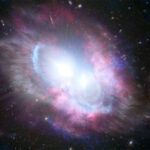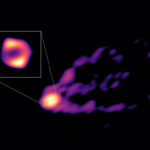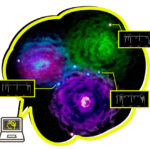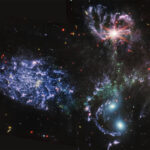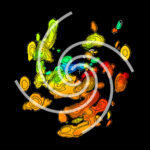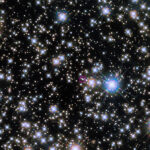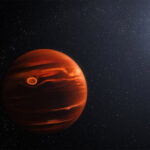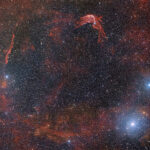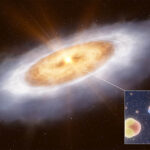Watch out, Earth! A Dying Star Just Ate A Planet
For the first time astronomers found direct clues of a dying sun-like star eating an exoplanet. Using the NSF NOIRLab’s Gemini South Telescope in Chile, researchers observed a long burst coming from the star, low in energy – a telltale sign of a planet swimming along near the star's surface. Artist Impression…
Fast and Furious starring Dual Quasars
Astronomers describe 'cosmic noon' as a dramatic period in the history of our Universe when it was buzzing with galaxy mergers and furious star formation. Observing these mergers has been relatively rare and challenging since the Universe was very young - only three billion years old! Astronomers found evidence of…
First direct image of a black hole expelling a powerful jet
For the first time, astronomers have observed, in the same image, the shadow of the black hole at the centre of the galaxy Messier 87 (M87) and the powerful jet expelled from it. The observations were done in 2018 with telescopes from the Global Millimetre VLBI Array (GMVA), the Atacama…
AI’s Hunt for the First Stars
Once upon a time, dinosaurs roamed our planet Earth - and even though we never met one, the fossils tell us their story. With the help of artificial intelligence (AI), an international team of astronomers have found the “fossils” of the very first stars in the Universe! They discovered that…
New map of the universe’s cosmic growth supports Einstein’s theory of gravity
For millennia, humans have been fascinated by the mysteries of the cosmos. Unlike ancient philosophers imagining the universe’s origins, modern cosmologists use quantitative tools to gain insights into its evolution and structure. Modern cosmology dates back to the early 20th century, with the development of Albert Einstein’s theory of general…
Playing Connect-the-dots Around a Baby Star
Have you ever played connect-the-dots in a magazine? At first, it looks like a mess - but after you figure out how to connect the points, a pattern appears out of the chaos. Recently, astronomers noticed a mysterious spiral pattern hiding around a baby star. But instead of ‘dots’, the…
NASA Missions Study What May Be a 1-In-10,000-Year Gamma-ray Burst
On Sunday, Oct. 9, 2022, a pulse of intense radiation swept through the solar system so exceptional that astronomers quickly dubbed it the BOAT – the brightest of all time. The source was a gamma-ray burst (GRB), the most powerful class of explosions in the universe. The Hubble Space Telescope’s…
Webb spots swirling, gritty clouds on remote planet
Researchers observing with the NASA/ESA/CSA James Webb Space Telescope have pinpointed silicate cloud features in a distant planet’s atmosphere. The atmosphere is constantly rising, mixing, and moving during its 22-hour day, bringing hotter material up and pushing colder material down. The resulting brightness changes are so dramatic that it is…
Blast from the Past!
Behold! the traces of the first-ever supernova recorded in history! A ring of glowing remains of the first-ever recorded supernova, a white dwarf star that exploded more than 1800 years ago. Credit: CTIO/NOIRLab/DOE/NSF/AURA Rector (University of Alaska Anchorage/NSF’s NOIRLab), J. Miller (Gemini Observatory/NSF’s NOIRLab), M. Zamani & D. de Martin (NSF’s NOIRLab).…
Astronomers find missing link for water in the Solar System
Using the Atacama Large Millimeter/submillimeter Array (ALMA), astronomers have detected gaseous water in the planet-forming disc around the star V883 Orionis. This water carries a chemical signature that explains the journey of water from star-forming gas clouds to planets, and supports the idea that water on Earth is even older…


